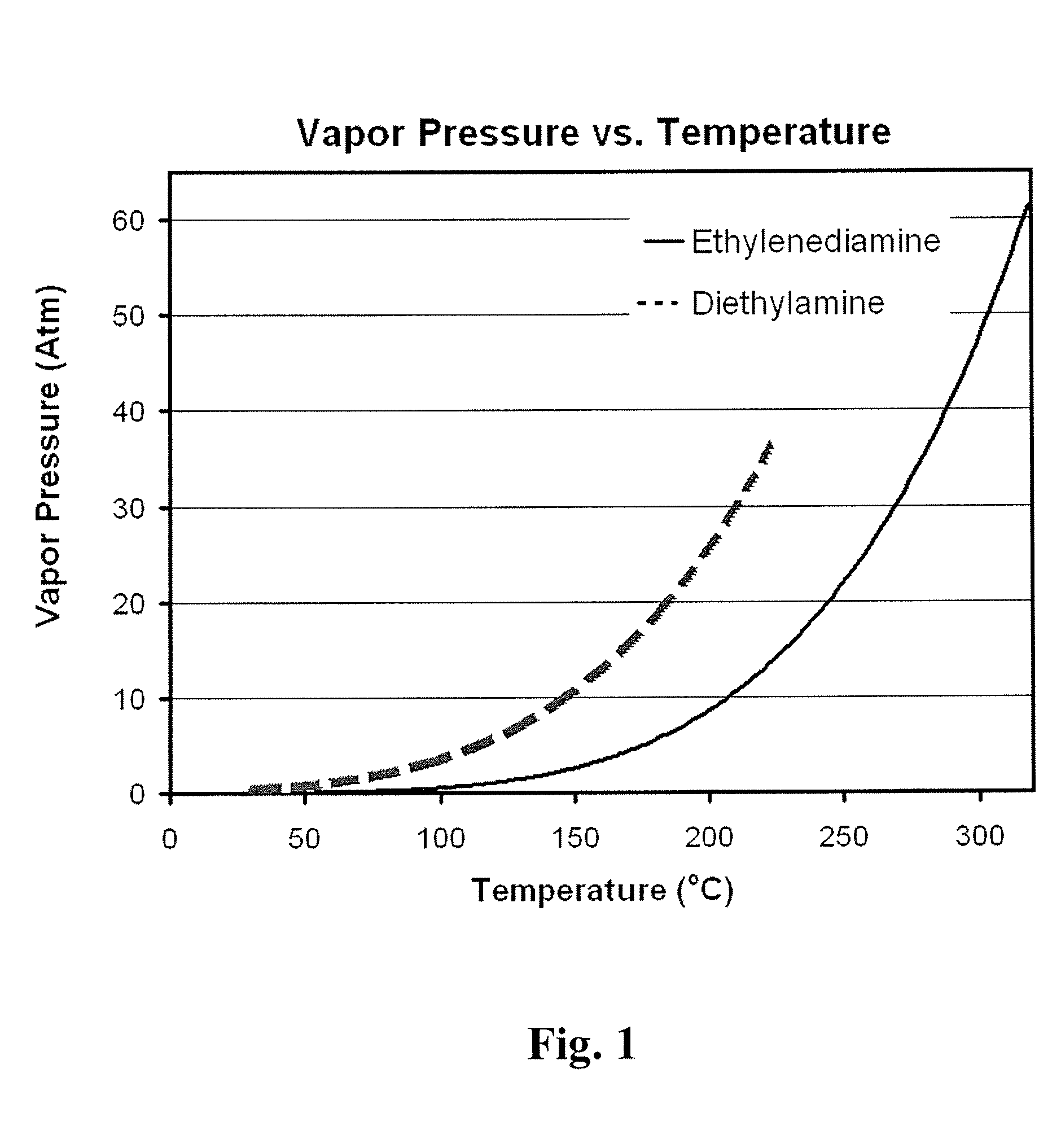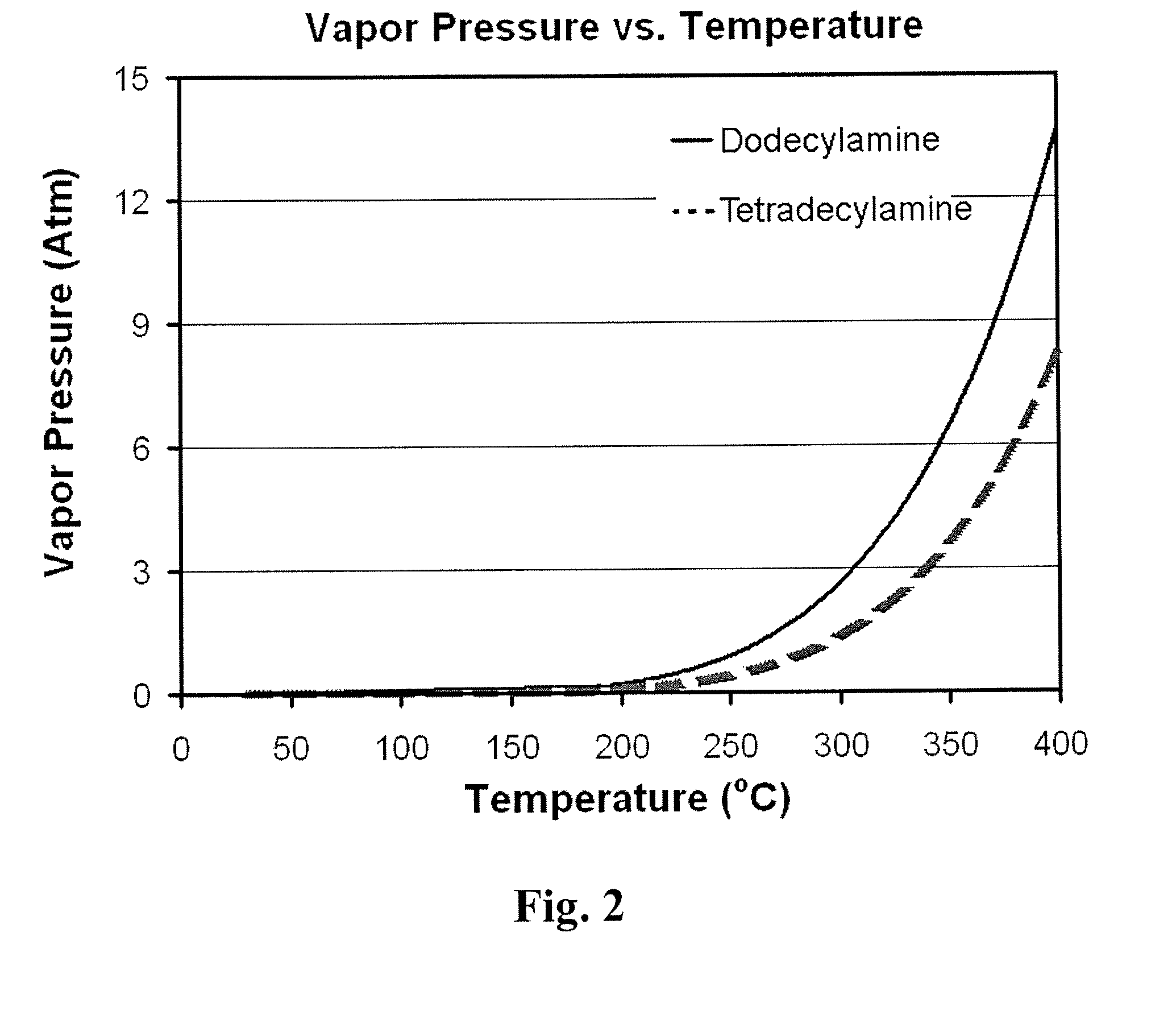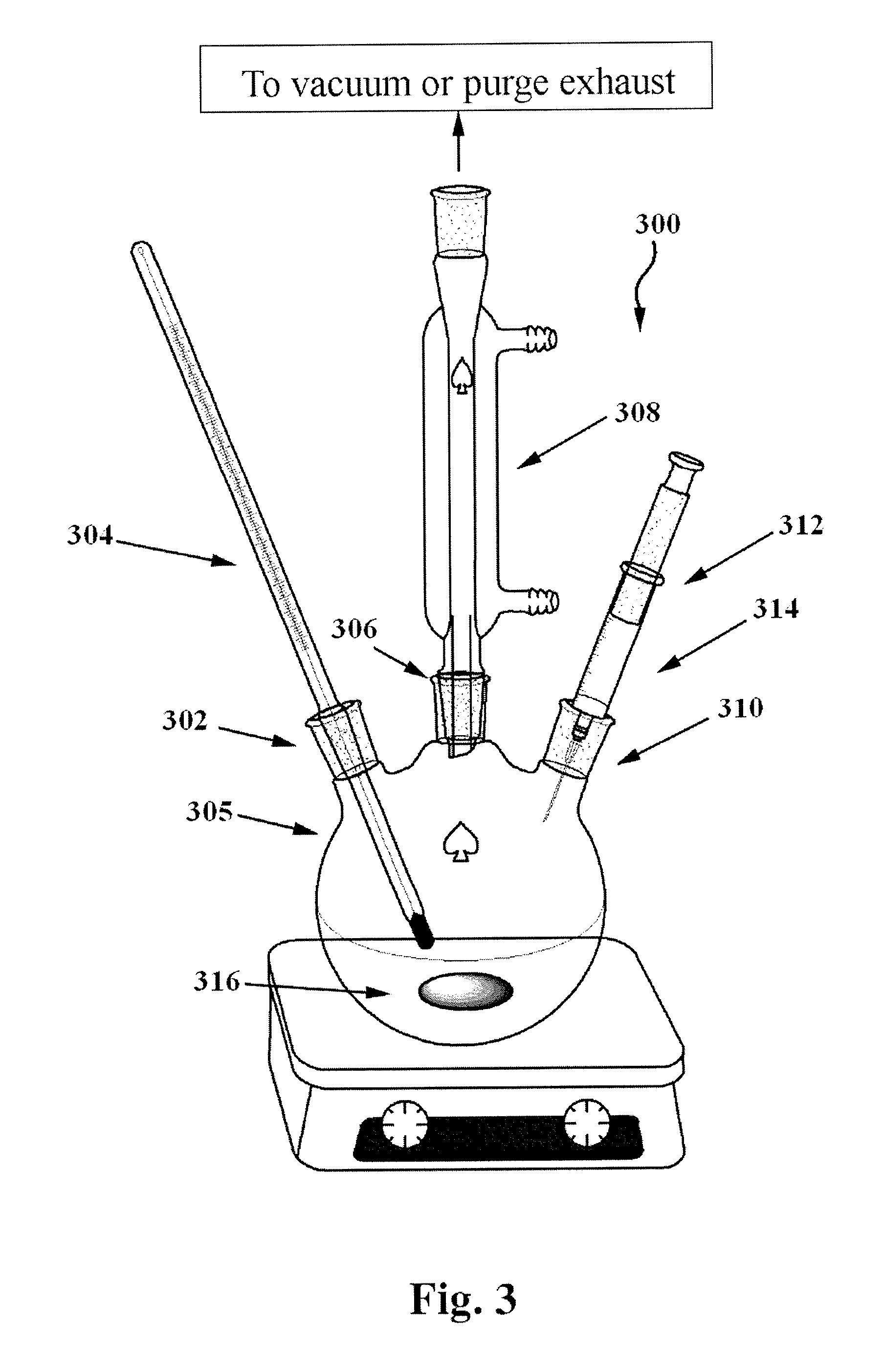Rapid synthesis of ternary, binary and multinary chalcogenide nanoparticles
a chalcogenide nanoparticle, ternary and multinary technology, applied in the direction of mercury compounds, sulfur compounds, cell components, etc., can solve the problems of unsaturated, branched, saturated alkyl tail of amines,
- Summary
- Abstract
- Description
- Claims
- Application Information
AI Technical Summary
Benefits of technology
Problems solved by technology
Method used
Image
Examples
example 1
[0059]CuInSe2 nanoparticles were synthesized using oleylamine as the only solvent. It is believed that the amines may act as surfactants or stabilizers during the synthesis of the nanoparticles even though the present invention is not bound by this conjecture. CuInSe2 nanoparticles were synthesized by reacting CuCl, InCl3, and Se in oleylamine at an elevated temperature of about 220° C. under an inert atmosphere. All manipulations were performed using standard air-free techniques utilizing a Schlenk line or glove box. According to the principles of this experimental procedure, 6 ml of oleylamine, 2.5 ml of 0.2 molar solution of CuCl in oleylamine, and 2.5 ml of 0.2 molar solution of InCl3 in oleylamine were added to a 25 ml three-neck round bottom flask connected to a Schlenk line apparatus as shown in FIG. 3. During the preparation of the CuCl precursor solution, the temperature was increased to about 100° C. to enhance the solubility of CuCl. The contents in the flask were heated ...
example 2
[0065]Chalcopyrite CuInSe2 nanoparticles were synthesized using oleylamine as the only solvent. It is believed that the amines may act as surfactants or stabilizers during the synthesis of the nanoparticles even though the present invention is not bound by this conjecture. 3 ml of oleylamine was added to a 25 ml three-neck round bottom flask connected to a Schlenk line apparatus as shown in FIG. 3. The contents in the flask were then heated to 130° C. and purged with argon three times by repeated cycles of vacuuming and back-filling with inert gas, and then degassed at 130° C. for 30 minutes. Next, 2.5 ml of 0.2 M CuCl in oleylamine, 2.5 ml of 0.2 molar InCl3 in oleylamine, and 4 ml of 0.25 molar Se powder in oleylamine were added to the reaction flask. After adding the precursors and purging the mixture with inert gas for a couple times, the temperature of the mixture was slowly raised up to 265° C., which took about 1 hour to achieve. The reaction was then held at 265° C. for 1 ho...
example 3
[0069]According to this example, CuInSe2 nanoparticles were synthesized into the shape of nanodisks. To achieve this, metal and chalcogen precursor solutions were prepared by dissolving the corresponding metal halides and Se in trioctylphosphine (TOP) where all of the precursors were soluble at room temperature. Specifically, 7.25 grams of octadecylamine was added to a 25 ml three-neck round bottom flask connected to a Schlenk line. The contents in the flask were degassed for 1 hour at 130° C. under vacuum, and then purged with argon. Next, 0.1 ml of 1 molar solution of CuCl in TOP was injected into the flask and purged with argon. Then, 0.1 ml of 1 molar solution of InCl3 in TOP was injected into the flask and purged again with argon. Next, the content of the flask was heated to 285° C. and 0.2 ml of 1 molar TOPSe was swiftly injected into the reaction mixture. After injection, the color of the solution started to turn dark within 30 seconds after injection, thereby indicating the ...
PUM
| Property | Measurement | Unit |
|---|---|---|
| boiling temperature | aaaaa | aaaaa |
| temperature | aaaaa | aaaaa |
| particle size | aaaaa | aaaaa |
Abstract
Description
Claims
Application Information
 Login to View More
Login to View More - R&D
- Intellectual Property
- Life Sciences
- Materials
- Tech Scout
- Unparalleled Data Quality
- Higher Quality Content
- 60% Fewer Hallucinations
Browse by: Latest US Patents, China's latest patents, Technical Efficacy Thesaurus, Application Domain, Technology Topic, Popular Technical Reports.
© 2025 PatSnap. All rights reserved.Legal|Privacy policy|Modern Slavery Act Transparency Statement|Sitemap|About US| Contact US: help@patsnap.com



